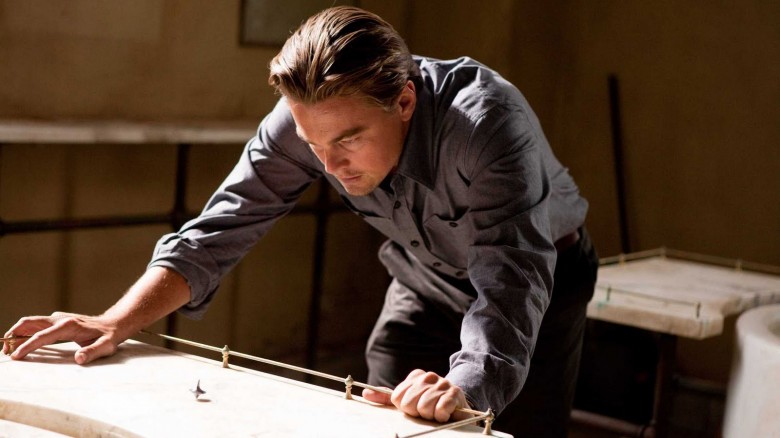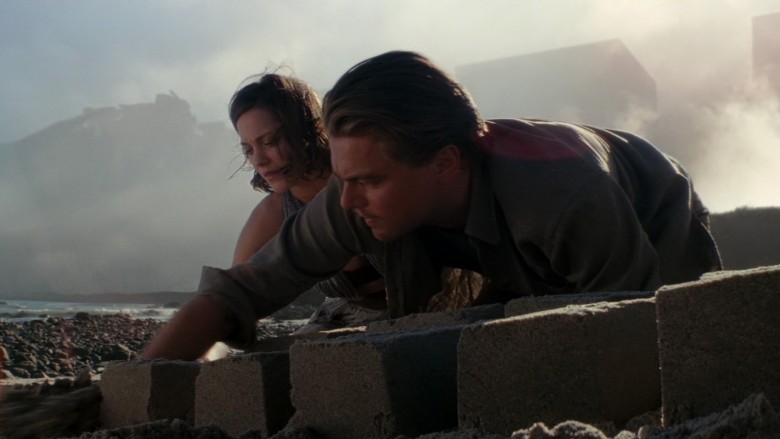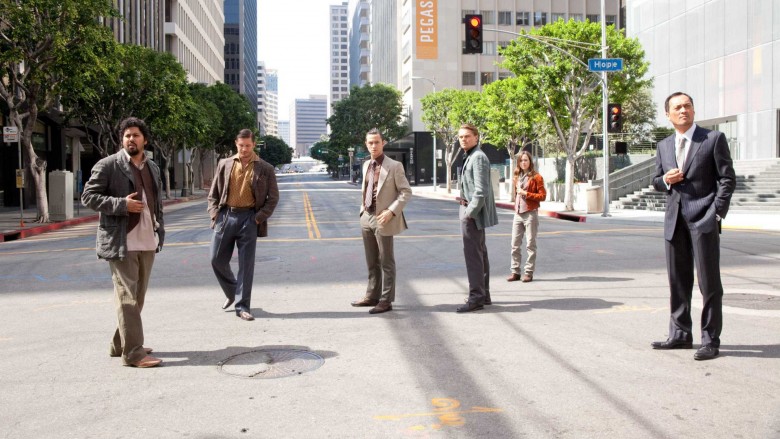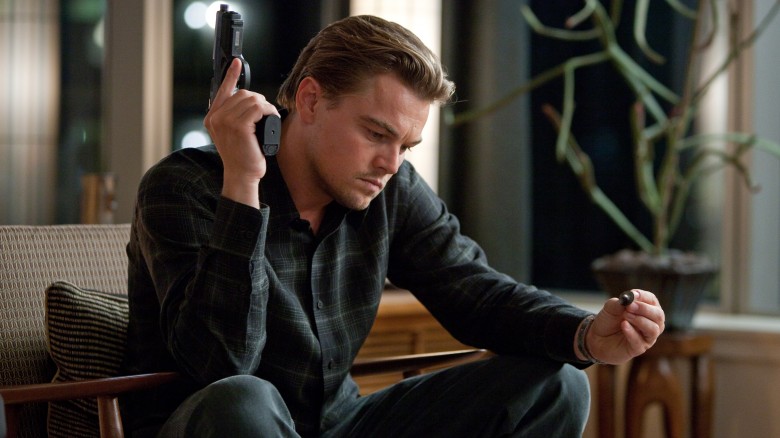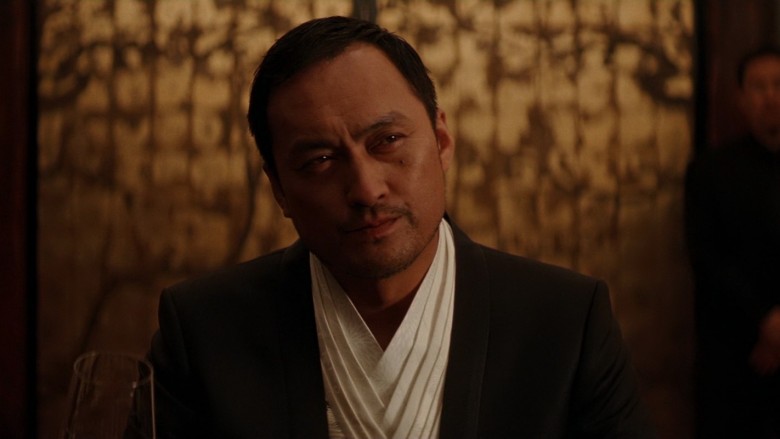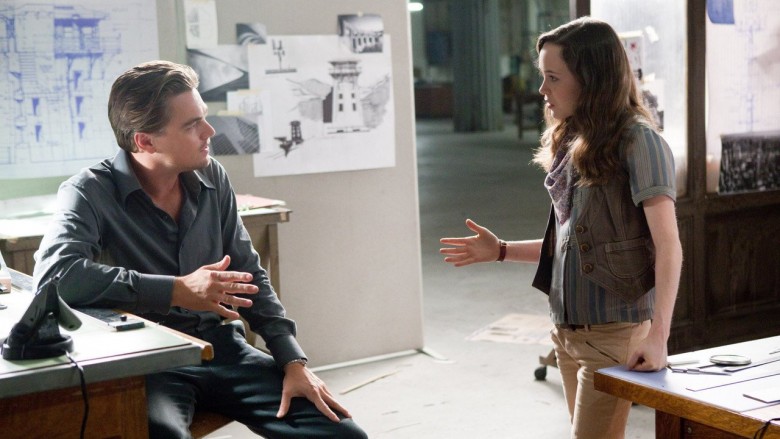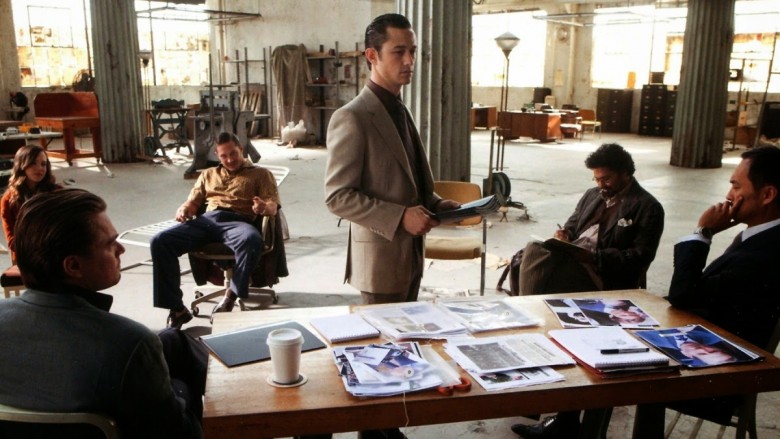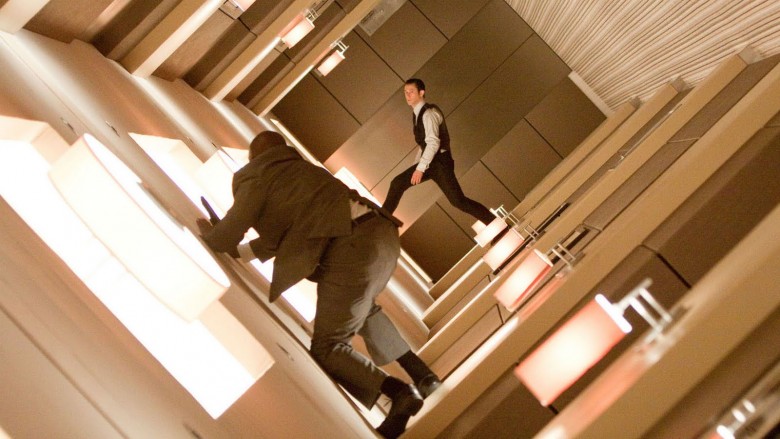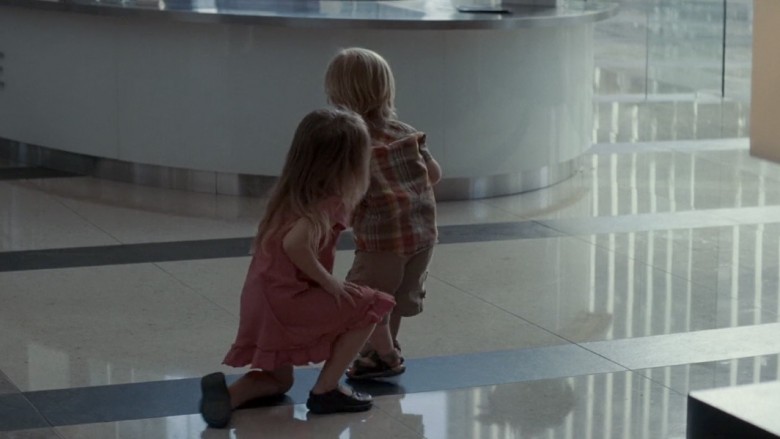What You Didn't Know About Inception
To say that Christopher Nolan's Inception was a cinematic dream might be an obvious pun, but it still fits. Equal parts vexing and enthralling, the Oscar-winning visual spectacular took viewers on an action-filled journey through layers of human consciousness—and the behind-the-scenes history of the production is just as fascinating. The story grew from a long-dormant nugget of an idea Nolan had in his earliest directorial days, blossoming into a thrilling puzzle that still has people wondering how—or whether—its pieces fit. Here's the untold truth of Inception.
The story sat in a drawer for a decade
Nolan positioned himself as a prestige writer-director with 2000's Memento, but it was Batman Begins that really put the auteur on the mainstream map. A critical and commercial success, it resurrected the Batman franchise from its post-Batman & Robin development hell; not surprisingly, Nolan was immediately brought back for a sequel, The Dark Knight, and when that proved an even bigger hit, he had some serious clout when it came time to pick his next project.
Warner Bros.' faith in the filmmaker's ability to draw an audience resulted in them greenlighting his passion project Inception despite its hefty $160 million production price tag. Nolan had been dreaming of doing the movie for roughly a decade; in fact, he'd already pitched the concept to the studio in 2002. The idea was born of his childhood interest in dreams, and he knew it was a complicated idea that couldn't be whittled down to some your average popcorn movie. As Nolan told Entertainment Weekly, "It's hard to convince a studio to give you a large budget to shoot an epic movie. When you've done it a couple times, there's a lot more confidence."
It was originally going to be a lot darker
Anyone who's seen Memento might be able to envision what Inception might look like as a full-on suspense thriller, and that's originally what Nolan had in mind. As he told The Telegraph, his concept of dream thieves invading people's minds for profit first had an eerier, low-budget aesthetic, but that all changed once he returned to the story.
"I was thinking along the lines of a horror movie at first, but it eventually became this project. I was looking for a device whereby the dreams would become important to the story, and the thought that someone could invade your dream space and steal an idea is immensely compelling to me. The concept that dreams feel real while we're in them underlies the whole film," he explained. "It's intimate and emotional, but I realised I had this concept that lent itself to an epic-scale movie."
Nolan's Hollywood experiences shaped the characters
Like a lot of creatives, Nolan subconsciously (see what we did there?) draws from real-life experiences to shape his narratives; with Inception, he structured his central characters as a subtle reflection of the major players in a movie-making experience. Leonardo DiCaprio's character Dom Cobb is said to be the director of the story, while Joseph Gordon-Levitt's Arthur was the producer, Ken Watanabe's Saito was the financier, Elliot Page's Ariadne was the production designer, and Tom Hardy's Eames was the action hero.
Nolan told Wired he didn't precisely mean for that to happen, but he can admit it did. "I didn't intend to make a film about filmmaking, but it's clear that I gravitated toward the creative process that I know. The way the team works is very analogous to the way the film itself was made. I can't say that was intentional, but it's very clearly there. I think that's just the result of me trying to be very tactile and sincere in my portrayal of that creative process," he explained.
But fans have noticed another running thread between these and other characters: adding together the first initials of these five, along with Marion Cotillard's Mal, Cillian Murphy's Robert Fischer, and Dileep Rao's Yusuf, spells out "dreams pay." Looking at the box office receipts for Inception, it's clear that this little anagram was an accurate prediction.
DiCaprio played a big role in designing the movie
Although he wasn't the only contender for the lead role of the dream-heisting entrepreneur (rumor has it Brad Pitt and Will Smith were both in contention), Leonardo DiCaprio had a big hand in making Inception what it was. Nolan told The Hollywood Reporter that he and DiCaprio had many brainstorming sessions about the script once he was brought on board to star, and he "made some extraordinary contributions to the script and really challenged me to make the script clear, but also to follow its interior logic and really be true to the essence of the characters and the rules we set out." Although DiCaprio isn't often credited for his typographical endeavors, it sounds like he was a critical script doctor where Inception was concerned.
Saito was specifically written for Watanabe
Japanese star Ken Watanabe was such a favorite of Nolan's from their limited work together on Batman Begins—in the film, Watanabe briefly starred as Ra's Al Ghul—that Nolan developed the part of Saito, the monopoly-busting energy billionaire, with him in mind. Nolan told press, "I wrote the part specifically for Ken because I wanted to work with him again. I enjoyed directing him so much on Batman Begins, but his role was smaller and we didn't have a lot of time together." Saito was, by design, a much bigger character.
Of course, Watanabe wasn't the only Dark Knight trilogy alum to grace the screen in Inception; Murphy and Michael Caine were also involved in one or both of the first two Batman films, and Goron-Levitt, Cotillard, and Hardy would join his final installment, The Dark Knight Rises.
Donald Duck foretold Inception … sort of
Original as Inception might be, a comic strip floated a spookily similar concept long before the film was made. In the May 2004 issue of Uncle Scrooge #329, "The Dream of a Lifetime" featured Scrooge McDuck's dreams being invaded by the Beagle Boys as they endeavor to lift the combination to his safe. His dutiful nephew Donald decides to go in and stop Scrooge from spilling the magic numbers. To be fair to Nolan, the strip did drop after he'd originally pitched his idea to Warners, but it's still a weird coincidence.
What's in a name?
It might seem significant enough that the names of the Inception characters combine to create an anagram, but they hold even more meaning. Cobb, which reportedly means "dream" in several languages including Sanskrit and Punjabi, was also the name of a character in Nolan's 1998 crime thriller Following. Meanwhile, Ariadne is the name of a Greek mythological character who controls labyrinths—"I wanted to have that to help explain the importance of the labyrinth to the audience ... it was just a little pointer, really," Nolan told Wired of that somewhat blatant reference. Meanwhile, it's also speculated that the character name Robert Fischer is a nod to chess master Bobby Fischer, especially since Ariadne's totem is a chess piece, but the actor who portrayed him didn't connect those things during the making of the movie. And it's widely believed that the name Maurice Fisher is a sly tribute to M.C. Escher, whose Penrose stairs art also inspired, and appeared in, the movie.
Those were not your grandpa's visual effects
While the visual effects team had their hands full with post-production CGI work during the making of the movie (and full of awards afterwards), Nolan's commitment to authenticity also meant that not only did the cast and crew travel to six different countries throughout the shoot, but even the most difficult scenes weren't produced by green-screen digital sleight of hand. For example, in the epic zero-grav hotel hallway fight, a 360-degree spinning corridor was used to create Gordon-Levitt's wall-hopping while a massive hanging replica was used to create the effect of the actors floating around the room. And in the restaurant scene that started bending with Fischer's imagination, the entire room was actually tilted, thanks to a giant device created by the crew, while DiCaprio and Page really did sit in the middle of a paper explosion to simulate that Parisian cafe dream gone wrong.
Nolan's reason for relying on practical effects, he explained, was that he "always knew there'd be a massive computer graphics effects component ... but it was important to me that we shot as much of as we could on camera to really give the visual effects guys a chance to do what they do best, which is to build on, enhance things that have existed or things that have been photographed."
Nolan's nepotism might hold the key to the ending
Fans of Inception stand firm on their various interpretations of the ending, despite Nolan himself clearing up his own meaning. As he said in a graduation speech, he basically meant that any subjective reality is real, and that Cobb just didn't care anymore what plane he existed on. But there's another clue that might clear things up even further: there were two different actors that portrayed Cobb's son—one of which is Nolan's own son.
He told Wired that he purposefully hired two sets of kids for the beginning and end of the film. "The younger version of the boy is actually my son, and it's not him who turns around at the end. There's no ambiguity here. They're very similar but not the same. That I would very much like people to notice, because it was a very, very difficult thing to pull off, taking two sets of kids all around the world and filming things two different ways."
It's not the only time one of Nolan's family members got a role in the movie—his cousin MIranda Nolan played the flight attendant and had a small role in The Dark Knight Rises as well—but it seems to be the most meaningful to the story.
There were a couple of Easter eggs you might've missed
Some of the architectural winks were obvious, like the nod to M.C. Escher's infamous staircase art, as well as subtler hat tips to the Nijo Castle (in Saito's Japanese room) and the Geisel Library at the University of California San Diego campus (with the snow fortress), among others. Given the fact that one of his central characters was an actual architect, it isn't surprising that structure designs were given so much play in the movie's background. When it comes to the real Easter eggs of Inception, though, Nolan decided to take Eames' advice and "dream a little bigger, darling."
One example is the use of the Edith Piaf song "Non, je ne regrette rien" as the kick music—which was also slowed down in the trailer. Not only was the song part of the film, but it informed Hans Zimmer's entire score, even slowed down for certain sequences to create a harrowing sound. According to some theorists, the length of the original recording, 2:28, may have been the reason the movie's run time clocked in at two hours and 28 minutes. As important as it was, however, the song was almost cut from the movie due to Marion Cotillard's Oscar-winning performance as the singer in 2007's La Vie en Rose.
Eagle-eyed fans also noticed that cars in the first dream layer had a license plate reading "Alternative State," and on the DVD, punching Fischer's famous numbers 5-2-8-4-9-1 into the remote yielded an animated comic prequel called Inception: The Cobol Job that explained how Cobb and his pals came to be Cobol Engineering employees in the first place.

